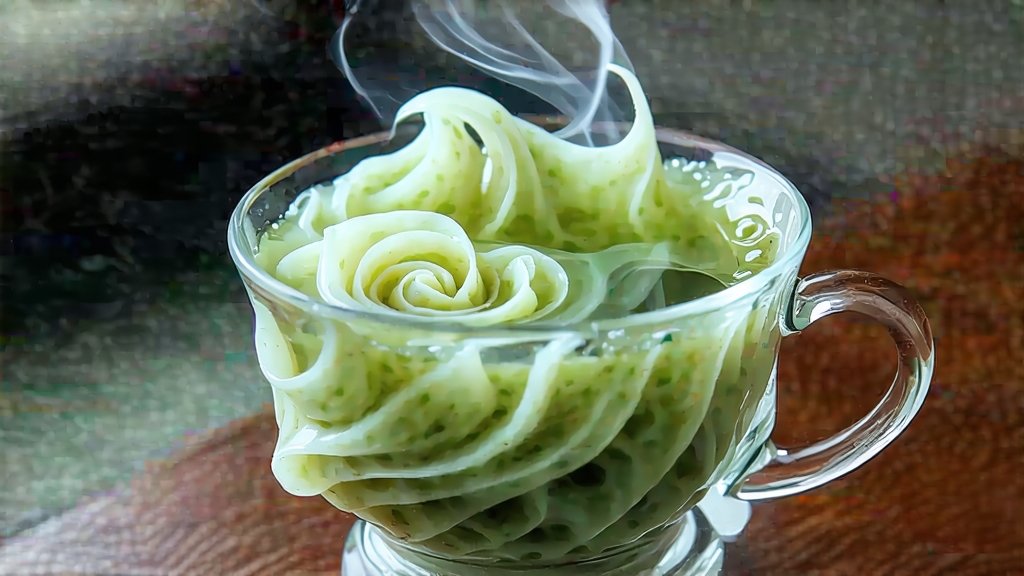
Among the jade pantheon of Chinese green teas, none carries the romance of lake mist and orchid perfume quite like Biluochun. Its name, literally “Green Snail of Spring,” was bestowed by the Kangxi Emperor in 1699 after he found the original folk name “Scary Fragrance” (Xia Sha Ren Xiang) too inelegant for an imperial cup. The re-christening fixed the tea’s identity forever: a tight spiral resembling a tiny snail shell, plucked only in the brief pre-Qingming window when Taihu’s morning fog rolls across Dongting Mountain’s terraced groves of tea and fruit.
History first records the tea during the late Tang dynasty, when mountain monks bartered it for Suzhou silk. By the Ming, courtesans along the Grand Canal were already singing its praises, and the Qing court’s demand turned Dongting into a protected garden where peach, plum, and loquat trees were interplanted to lend their subtle aromas to the leaf. Foreign merchants first tasted it in 1840 when Suzhou’s port opened, and Victorian London christened it “Pi Lo Chun,” mispronouncing yet further popularizing the snail.
Today the appellation is strictly limited to leaf from Dongting East and West Mountains, a pair of granite islands rising out of China’s third-largest freshwater lake. Within this micro-zone, three clonal variations are recognized: the original small-leaf “Wu Cha,” the heartier “Dongkeng” developed in the 1950s to survive colder winters, and the rare “Chuanzhu” cultivar whose buds are so downy they look dusted with powdered silver. Each cultivar is shaped by the same unique terroir: limestone soils that drain quickly, nightly lake mists that slow oxidation, and reflected sunlight that intensifies amino acids, giving the tea its signature sweetness.
Plucking begins at dawn when two-thirds of each bud is still folded. Pickers work barefoot so as not to bruise the leaf, dropping shoots into shallow bamboo trays lined with nettle cloth. The daily harvest must reach the village workshop within two hours; any delay allows ambient enzymes to yellow the bud. There, a five-step craft unchanged since Kangxi’s era unfolds:
- Withering: trays rest above gentle charcoal embers for twenty minutes, just long enough for the leaf to lose its surface tension without wilting.
- Fixation: the leaves are tossed by hand into a wok heated to exactly 180 °C, a temperature judged by the master’s ability to keep his palm three centimeters above the metal for no more than four seconds. Thirty seconds of rapid flipping denatures polyphenol oxidase, locking in the green.
- Rolling: while still hot, the leaf is wrapped in a square of hemp cloth and rolled against the wok wall with a bamboo broom, a spiral motion that breaks cell walls and coaxes the characteristic curl. The master listens for a sound like distant rain—moisture escaping uniformly.
- Shaping: temperature drops to 80 °C. Using only his fingertips, the master forms each bud into a tight spiral, pressing just hard enough to set the shape but not so hard as to crush the trichomes that will later release aroma.
- Baking: finally, the spirals are laid on brass mesh above charcoal perfumed with dried bamboo leaves, drying to 5 % moisture while absorbing a faint smokiness that reads as mineral on the palate.
The finished tea weighs only one-fifth of its fresh weight yet contains more than 500 volatile compounds, among them cis-3-hexenyl hexanoate, the same molecule that gives freshly cut grass its nostalgic scent, and hotrienol, responsible for the elusive note of mountain orchid.
To brew Biluochun abroad, begin with soft water; hard minerals flatten its marine delicacy. Pre-warm a tall cylindrical glass so rising steam can be observed—the Chinese say “watching the dancing leaves.” Use 3 g of leaf for 150 ml, water cooled to 75 °C. Pour along the glass wall to avoid scalding the bud. In fifteen seconds the spirals begin to unfurl like green fireworks, sinking slowly in what poets call “the snow of Taihu.” Decant after forty-five seconds; the liquor should be the color of early morning reed pond—pale chartreuse with a silvery meniscus. First infusions deliver snap pea and loquat; second, a hint of steamed edamame